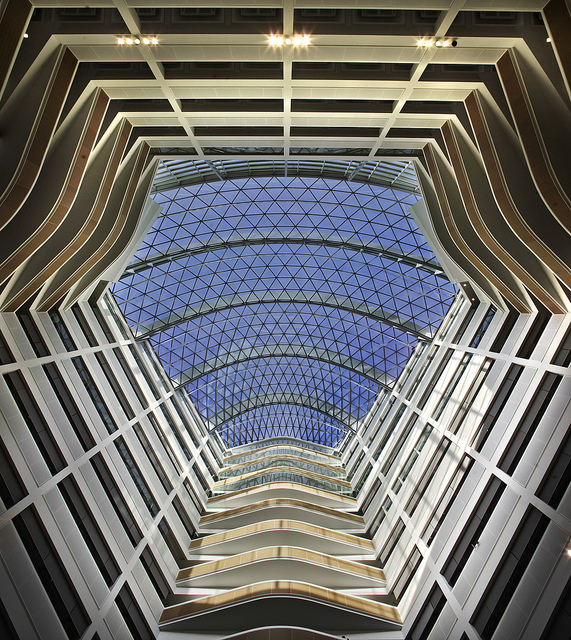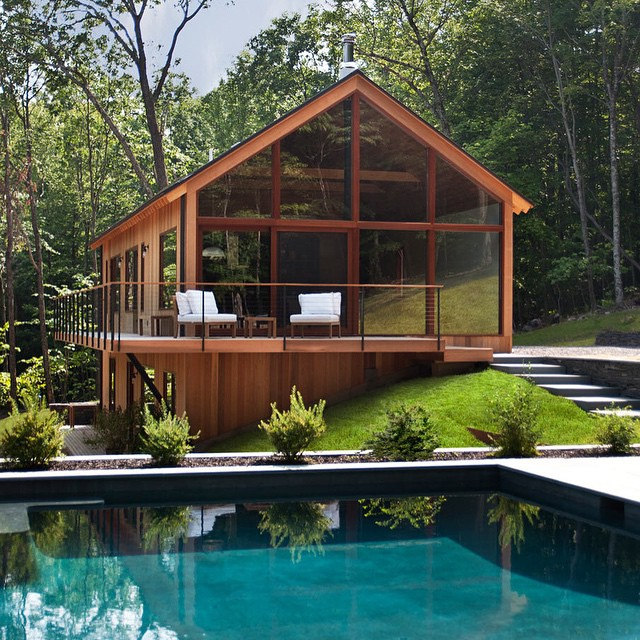Taking care of the environment and helping Mother Nature get back on her feet has become the mantra of the 21st century. Pacts between governments have been signed and ratified. Regulations have become stronger and fines more severe. Recycling has taken on much more importance than ever before. People and companies are trying to find creative and innovative ways to make the most out of what we have available in order to minimize the impact our actions have on the planet and the resources it has given us for so long, but which are rapidly dwindling. One these ways that is helping us protect Earth is how we have started to add environmental awareness into how we build structures.
Build green or don’t build at all
Ecological architecture. Green design. Sustainable architecture. Three different names, exact same meaning and concept. In a nutshell, environmentally friendly architecture is how we build structures with Mother Nature in mind. What this means is that in order to build something that is truly green, the structure must work hand-in-hand with its environment as opposed to how we have been doing all along where the surroundings are the least of our worries. Any sustainable architecture project must comply with the following principles:
- The design must be done in a way that sunlight and natural heat are used as much as possible.
- Conserve as much water as possible.
- The structure should be a natural fit to the area, rather to standing out.
- Ideally, the structure should not remove anything from the earth and what is removed should be replaced.
- Renewable energy should be used to power the structure.
- Build with materials that will help reduce energy costs and water usage.
I’m still on the fence, why should I build with the environment in mind?

That’s a really good question. Some people consider going environmentally friendly as an expensive initial investment. However, there are a number of advantages to building with the environment in mind.
- More money for you and less for the bills.
If a clean conscience with the environment isn’t enough to convince you, then consider the other green that dominates the world. Going environmentally friendly in building practices is sound business, money is saved everywhere you look. Environmentally friendly buildings usually have great big windows to allow more sunlight and natural heat to a space. Not having to flip a light switch or turn on the heater saves a significant chunk of change. Having materials that help you save water helps reduce the cost of the water utilities bill.
- Beautiful spaces and productive workers
For those with a business, how the workplace is organized has a direct impact on productivity. With that said, there is something about the color green that soothes everyone and helps them concentrate more. Additionally, environmentally aware buildings and offices are more often than not things of aesthetic beauty. They are rather enjoyable places to be in. If workers are happy with their space, there will probably be a noticeable mark on productivity.
- The environmental factor
Here is where eco-architecture has the largest and most considerable impact. Raising a building often implies digging out large amounts of dirt or demolishing structures. Sustainable architecture is all about using what you have to your advantage. Already existing structures can be retrofitted to use what is standing and structurally sound and minimize debris disposal (which in itself does some considerable harm to the environment). Building green also means recycling resources used by the building to make it more energy efficient as well as making sure the structure adds to the quality of the environment rather than take away from it. That is why you will see buildings that boast a LEED Certification being surrounded by many green areas or made of glass.
- Gives the community a gathering spot
A side effect of sustainable architecture and how eye catching it is can be seen in how it draws a crowd. People want to go to places where there are trees and park-like atmospheres. Green buildings accomplish this without it being the real intention. Sustainable architecture helps the community by giving it a place to go and disconnect from the hassles of life. It’s not uncommon to see cafés and bistros pop up wherever there is a sustainable office building, for example.
The world is practically on life support. We are consuming natural resources much faster than what the planet can renew. We need to have spaces which cooperate with the environment instead of hurting it. Sustainable architecture is the future of architecture. How buildings are designed and built has to consider the impact the structure will have on the environment. Architects and civil engineers cannot worry about raising a structure and nothing else. They must now consider how efficiently they use the resources of an area and their construction processes in order to give Mother Nature a much needed breath of air.
Sustainable architecture is just one of the trends that we see in today’s architecture industry. Check out the post by Kenneth Slaught regarding the 10 most innovative trends to see what else is drawing the industry’s attention.
